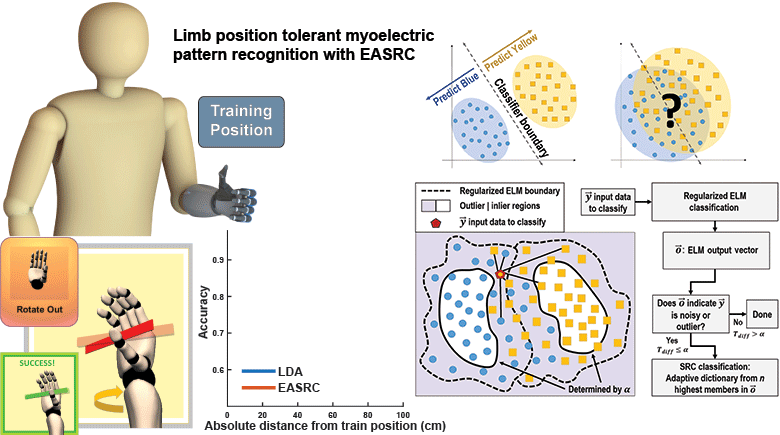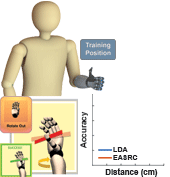
Electromyogram (EMG) signals can be used to decode the intended movements of an amputee for control of a dexterous upper-limb prosthesis. However, normal prosthesis use involves changes in upper-limb positions that influence the EMG signals, hindering the ability of pattern recognition algorithms to discriminate among motion classes. Multi-positional training may improve performance, but an extensive training process is burdensome for amputees. We present a robust adaptive classification method, Extreme Adaptive Sparse Representation Classification (EASRC), that achieves high recognition accuracy on data that is noise-corrupted, occluded, or misaligned. Sparse representation methods are robust in untrained conditions because test data are reconstructed from sparse subsets of training data, reducing the influence of noise and outliers resulting from untrained effects. We demonstrate that EASRC is significantly more robust (p < 0.001) than other commonly used myoelectric classification methods in the online and offline contexts of untrained upper-limb positions for amputee and able-bodied subjects. Our experimental pathway to evaluating limb position tolerance was to ensure that the limb positions used for algorithm testing were not the same as those used for training. Pattern recognition performance falls off as a user deviates further from a given training limb position; however, this descent is drastically muted by EASRC, implying greater reaching-space coverage (generalization) from each trained position. Across all amputee and able-bodied subjects, the EASRC classifier trained in just two limb positions outperformed other classifiers trained in six— implying stable, high performance from a reduced training burden. Furthermore, we demonstrate tolerance to the prosthesis load itself, showing EASRC is robust across a variety of real-world condition spaces. Therefore, this method has the potential to deliver real-world translational benefits to amputees: better general condition-tolerant performance, reduced training burden in terms of frequency and duration, and increased adoption of myoelectric prostheses.

